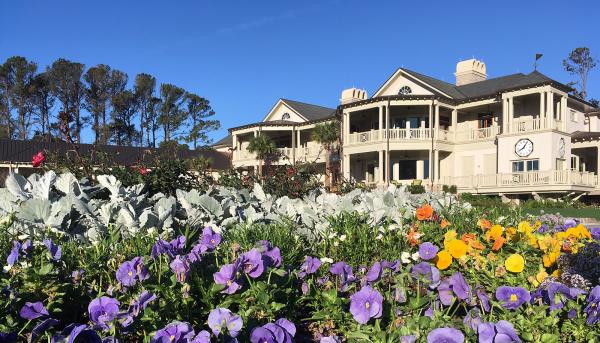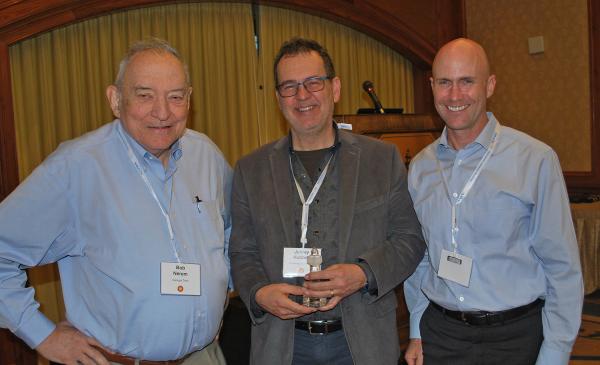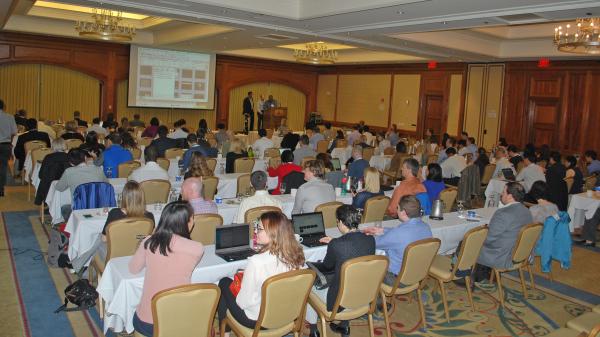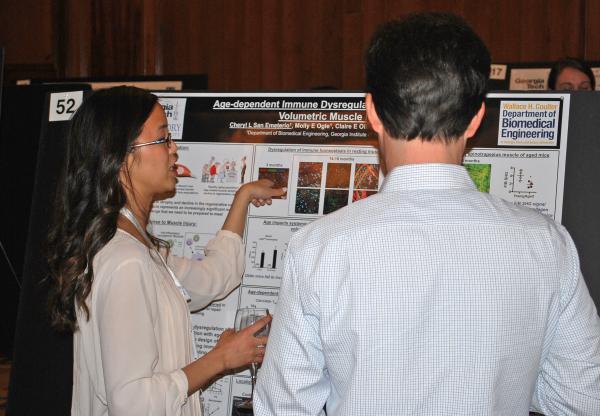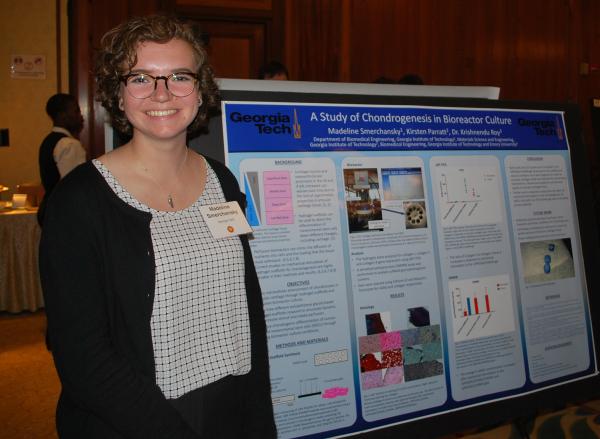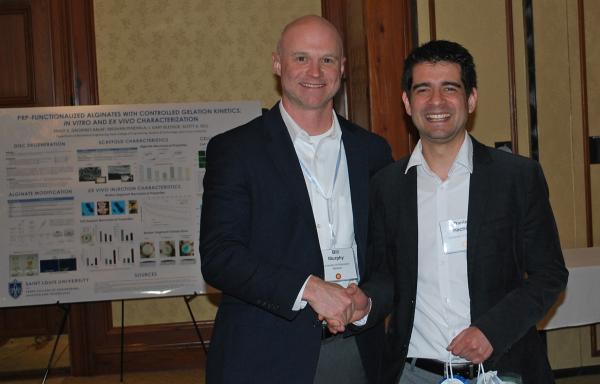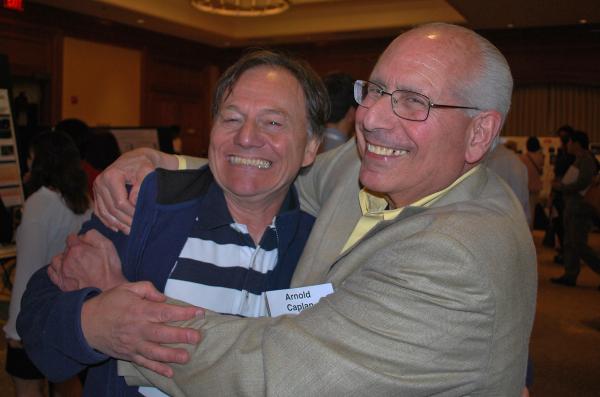The Regenerative Medicine Workshop at Hilton Head began its third decade with a long and diverse lineup of researchers who presented their latest work on a spacious range of topics, from DNA barcoded technology to strategies to reverse tissue degeneration in rotator cuff injuries.
In other words, the usual dizzying array of up-to-the-minute research from some of the world’s leading scientists and engineers.
But if there was a topical theme to last week’s 21st annual workshop (March 1-4), it was immunology.
“The Hilton Head summit has always been a place where you can learn about the great, late breaking innovations in regenerative medicine,” says Ned Waller, professor in the Emory University School of Medicine, and a researcher with the Petit Institute for Bioengineering and Bioscience at Georgia Tech. “What's striking this year is, half the talks are about immunology.”
And that suits Waller just fine. He is director of the Division of Stem Cell Transplantation and Immunotherapy at the Winship Cancer Institute of Emory, where he also directs the Bone Marrow and Stem Cell Transplant Center. And his research presentation at Hilton Head was entitled, “Another Arrow in the Anti-cancer Quiver: VIP Immunotherapy.”
Waller also is one of three co-directors of the Regenerative Engineering and Medicine (REM) research center, a consortium of research institutes in Georgia: Emory, Georgia Tech, and the University of Georgia. REM is one of four organizing partners of the workshop, the others being the Stem Cell and Regenerative Medicine Center at the University of Wisconsin, the Mayo Clinic’s Center for Regenerative Medicine, and the McGowan Institute for Regenerative Medicine at the University of Pittsburgh.
Accordingly, faculty, post-doctoral, and student researchers from those institutions were well represented. But the workshop also drew researchers from across the spectrum and the planet. Among the speakers were Ronald Germain from the National Institutes of Health, Molly Stevens from Imperial College in London, and Rolando Gittens, who earned his Ph.D. in bioengineering at Georgia Tech in 2012 and is now a research scientist at the Institute for Scientific Research and High Technology Services of Panama.
Deep Roster of Research
There were also deep-dive presentations from researchers based at Duke, Harvard, Tufts, and Yale universities, among others, and Jeff Hubbell, the Nerem Lecturer from the University of Chicago (who delivered a talk on “Biomolecular Engineering in Regenerative Medicine and Immunotherapies”).
Steve Stice, as co-director of the REM from the University of Georgia (UGA), the newest member of the consortium, appreciated the geographic range of work that was presented.
“One of the nice things this year is that UGA and other institutions are well represented,” says Stice, professor and director of the Regenerative Bioscience Center at UGA and a Petit Institute researcher. “So it’s not just Emory and Georgia Tech, it’s also Mayo, and Wisconsin, and Pittsburgh, and we’ve brought in speakers from all over. It’s really grown and become a highly recommended event in the regenerative medicine community.”
Trainees – postdocs, grad students, and at least one undergraduate – had a chance to present their work, also. First there were rapid fire presentations (5 minutes) on Thursday afternoon, then a research poster competition that night, featuring 65 different projects on display.
The winning poster came from Daniel Hachim, a grad student at the University of Pittsburgh, whose project is entitled, “Unveiling Macrophage Populations and Mechanisms Driving the Better Remodeling Outcomes Associated with Shifting Phenotype in the Host Response Against Biomaterials.”
Going Live
Cheryl San Emeterio, a Ph.D. student at Georgia Tech, has presented posters the last three years at this event, but this was her first rapid fire presentation.
“I thought it was flattering and inspiring, to talk among so many distinguished scientists here,” says San Emeterio, who does her research in the lab of Ed Botchwey, associate professor in the Wallace H. Coulter Department of Biomedical Engineering (a joint department of Emory and Georgia Tech).
“It’s great to get my work out there on this scale, and I hope that people are interested and want to discuss it further. And maybe we can form some sort of productive collaboration,” adds San Emeterio, whose research is entitled, “Age-dependent immune Dysregulation during Repair of Volumetric Muscle Injury.”
Standing near her poster for most of the evening was Madeline Smerchansky, a Petit Undergraduate Scholar from Georgia Tech attending her first Hilton Head conference. She saw the opportunity as something of an investment.
“This is practice for the future,” says Smerchansky, a third-year student.
At least one researcher during the four-day workshop offered a glimpse into the future from a perspective that did not include biomolecular science or immunology. Aaron Levine, associate professor in the School of Public Policy at Georgia Tech and a Petit Institute researcher, delivered a presentation called, “Regenerative Medicine in a Time of Policy Uncertainty.”
“We haven’t seen a lot of clear signals yet with how the policy environment is going to play out from the current presidential administration,” says Levine, who focused his Friday morning talk on, among other things, potential policy drivers for regenerative medicine, such as the 21st Century Cures Act (will it be implemented by this administration, and if so, how much of it?), and the appointment of a commissioner for the Food and Drug Administration (FDA).
The future of the Cures Act may be largely dependent on who the next FDA commissioner is, noted Arnie Caplan (of Case Western University) during Levine’s post-talk Q&A session.
Later that evening, it was Caplan’s turn to take center stage with Chris Evans of the Mayo Clinic.
They were the main event, you might say. With a backdrop of Caplan and Evans as photo-enhanced boxers the mood was light for their Friday night debate, entitled, “MSCs are Not Stem Cells.” Or, as Nerem put it, “is an MSC a mesenchymal stem cells, a medical signaling cell, or a mediocre scientific concept.”
By all accounts, they verbally fought to a draw. But who knows. Maybe there will be a rematch in 2018, when the Regenerative Medicine Workshop returns to Hilton Head (March 21-24).
CONTACT:
Jerry Grillo
Communications Officer II
Parker H. Petit Institute for
Bioengineering and Bioscience
Media Contact
Jerry Grillo
Communications Officer II
Parker H. Petit Institute for
Bioengineering and Bioscience
Keywords
Latest BME News
Jo honored for his impact on science and mentorship
The department rises to the top in biomedical engineering programs for undergraduate education.
Commercialization program in Coulter BME announces project teams who will receive support to get their research to market.
Courses in the Wallace H. Coulter Department of Biomedical Engineering are being reformatted to incorporate AI and machine learning so students are prepared for a data-driven biotech sector.
Influenced by her mother's journey in engineering, Sriya Surapaneni hopes to inspire other young women in the field.
Coulter BME Professor Earns Tenure, Eyes Future of Innovation in Health and Medicine
The grant will fund the development of cutting-edge technology that could detect colorectal cancer through a simple breath test
The surgical support device landed Coulter BME its 4th consecutive win for the College of Engineering competition.

